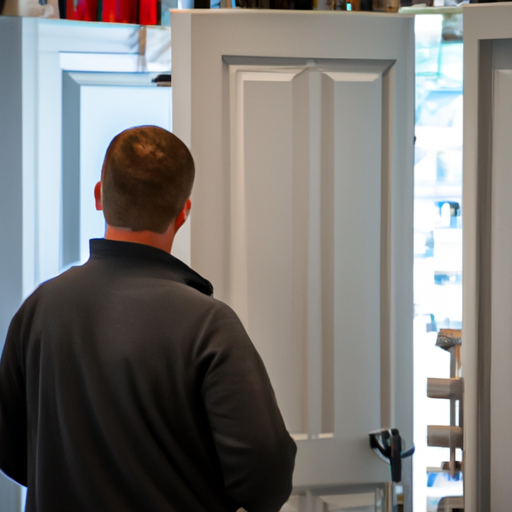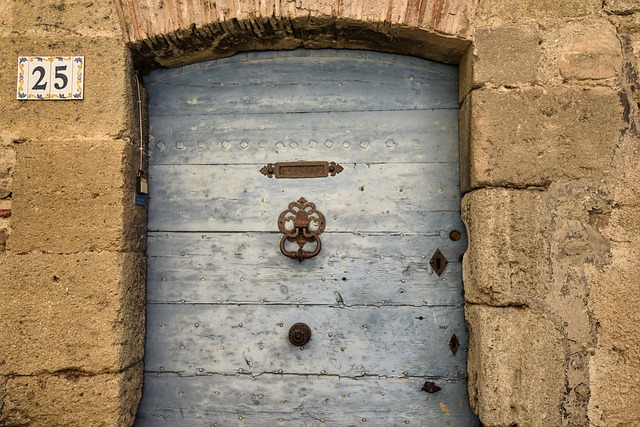In the face of increasing safety concerns and rising crime rates, the importance of securing one's home or business cannot be overstated. One of the most effective ways to achieve this is by installing forced entry resistant doors. This blog post explores the benefits of these doors, how they work, and what to consider when purchasing one.
Why Are Forced Entry Resistant Doors Important?
Forced entry resistant doors play a crucial role in ensuring the safety and security of homes and businesses. In an era where burglary and break-ins are unfortunately prevalent, having a robust door that can withstand forced entry attempts is of paramount importance. These doors serve as a strong deterrent to potential intruders, as they are designed to resist common methods used to gain unauthorized access, such as kicking, prying, or drilling.
Unlike traditional doors, forced entry resistant doors are constructed using high-quality materials and innovative techniques that make them highly resistant to forced entry attempts. They are typically reinforced with steel or other strong materials, making it extremely difficult for intruders to break through. This added layer of protection provides homeowners and business owners with peace of mind, knowing that their property is well-secured against potential threats.
Furthermore, forced entry resistant doors not only protect against burglaries but also offer protection during natural disasters and extreme weather conditions. These doors are designed to withstand the impact of strong winds, flying debris, and even attempts to force them open. This level of resilience ensures that the occupants of a building remain safe and protected, even in the face of external threats.

A photo showing a burglar trying to force his way into a house, but thwarted by a forced entry resistant door.
How Do Forced Entry Resistant Doors Work?
Forced entry resistant doors are designed with several key features that make them highly effective in preventing unauthorized access. One of the primary elements is the use of reinforced materials, such as steel or other strong alloys, in the construction of the door. These materials are incredibly durable and can withstand significant force without giving in. They are often combined with multiple layers of insulation and reinforcement, further enhancing their resistance to forced entry.
Another crucial aspect of forced entry resistant doors is the inclusion of advanced locking systems. These doors often come equipped with high-security locks that are designed to be pick-resistant, drill-resistant, and tamper-resistant. These locks are typically built into the door frame and provide an added layer of security against forced entry attempts. Additionally, some forced entry resistant doors may also incorporate additional security features like multiple deadbolts or electronic access control systems for further protection.
In addition to the materials and locking mechanisms, forced entry resistant doors may also include reinforced hinges and frames. These components are designed to withstand the pressure exerted during a forced entry attempt, making it difficult for intruders to break through. The combination of reinforced materials, advanced locks, and sturdy hinges ensures that forced entry resistant doors provide a comprehensive defense against unauthorized access.
Furthermore, forced entry resistant doors are often tested and certified by independent organizations to meet specific industry standards. These tests evaluate the door's resistance to various forced entry techniques, including prying, drilling, and impact. By undergoing rigorous testing, these doors are proven to be effective in deterring forced entry attempts, providing users with added confidence in their security measures.
What to Consider When Purchasing a Forced Entry Resistant Door?
When purchasing a forced entry resistant door, there are several important factors to consider. First, it is crucial to assess the specific security needs of your property. Consider factors such as the location of your property, the level of crime in the area, and the value of the assets you want to protect. This will help determine the level of security required and guide your choice of a suitable forced entry resistant door.
Secondly, consider the material and construction of the door. Look for doors made from high-quality materials such as steel or other strong alloys known for their durability and resistance to forced entry. Additionally, pay attention to the door's construction, including the number of layers, insulation, and reinforcement. The more layers and reinforcement, the better the door's resistance to forced entry.
Another important consideration is the door's locking system. Opt for doors equipped with high-security locks that are resistant to picking, drilling, and tampering. Advanced locking systems, such as electronic access control or multiple deadbolts, can provide an extra level of security. Ensure that the locks are built into the door frame and are well-matched with the door's overall security features.
Additionally, it is advisable to choose forced entry resistant doors that have undergone independent testing and certification. Look for doors that meet recognized industry standards for forced entry resistance. This certification ensures that the door has been rigorously tested and proven effective against various forced entry techniques, giving you peace of mind about its reliability.
Finally, consider the aesthetics and functionality of the door. Forced entry resistant doors come in a variety of designs and finishes, allowing you to choose one that complements the style of your property. Additionally, ensure that the door operates smoothly and is easy to use on a daily basis.

A photo of a homeowner in a hardware store, examining different types of forced entry resistant doors.
How Much Should You Expect to Pay for a Forced Entry Resistant Door?
The cost of a forced entry resistant door can vary depending on several factors. Generally, you can expect to pay a higher price for a door that offers higher levels of security and durability. The material used, the construction, and the level of certification all contribute to the overall cost.
A basic forced entry resistant door made of steel or a strong alloy can start at around $1,000. However, for doors with advanced security features and certifications, the price can increase significantly. High-end forced entry resistant doors can cost several thousand dollars, especially if they incorporate additional features such as electronic access control systems.
It is important to remember that investing in a high-quality forced entry resistant door is an investment in the security of your property and the safety of its occupants. While the initial cost may seem significant, it is crucial to consider the long-term benefits and potential savings in terms of preventing break-ins and protecting valuable assets.
When budgeting for a forced entry resistant door, it is recommended to prioritize security features that align with your specific needs. Assess the level of security required for your property and balance it with your budget. It is advisable to consult with security professionals or door manufacturers to get an accurate estimate based on your specific requirements.
Forced Entry Resistant Doors:
| Type of Door | Security Rating | Installation | Cost |
|---|---|---|---|
| Steel | High | Professional | Moderate |
| Aluminum | Medium | DIY | Low |
| Wood | Low | DIY | Low |
| Composite | High | Professional | High |
As we've seen, forced entry resistant doors are a worthwhile investment for anyone looking to bolster the security of their homes or businesses. They offer a high level of protection, increase property value, and provide peace of mind. By understanding the important factors such as materials, features, certifications and cost, you can make an informed decision that suits your specific needs.
